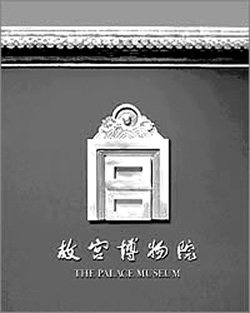|
Palace Museum sued over new logo
By Liu Chang (China Daily)
Updated: 2005-11-03 05:48

Logo of the Palace Museum
Three designers, who lost out in a competition to design a logo for Beijing's
Palace Museum, have taken the museum to court.
Zhu Yanyue from Anhui, Hong Qingqi from Fujian, and Xiang Baiping from
Shaanxi are suing for a combined total of 130,000 yuan (US$16,100). They all say
the Palace Museum's new logo bears an uncanny resemblance to their own designs,
rejected by the museum a year ago.
Sources with the Palace Museum and the credited logo designer, the Beijing
Ideal Design Art Company, deny the charges.
The defendants say the logo, released in July, was designed independently and
does not use any element of work by the three plaintiffs.
Beijing No 2 Intermediate People's Court held the first hearing on Tuesday,
no judgment has yet been made.
Last year, the Palace Museum offered a first prize of nearly US$10,000 in a
competition to design an eye-catching emblem.
A year later, the museum announced that none of the 2,800 designs entered met
its requirements and employed the Ideal Company to take over the task.
The logo is based on the Chinese character gong, which means palace.
According to Zhu Yanyue, the logo he entered in the competition was also
based on gong. "The logo was similar to my design," he said.
Zhu claims that, since the Palace Museum entrusted the Ideal Company to
design the logo after receiving his work, designers from the company plagiarized
his work.
Zhu, with the other two plaintiffs, claims the logo violates copyright, and
has demanded the court order the Palace Museum to stop using the logo and make a
public apology.
Sources with the Palace Museum said that the accusations were groundless.
"The Chinese character of gong is in the public domain," a lawyer for the museum
said.
The Palace Museum and the Ideal Company also deny logos entered in the
competition were passed to the design company.
The Palace Museum, also known as the Forbidden City, was built in the Ming
Dynasty (1368-1644) from 1406 to 1420. Covering an area of 720,000 square
metres, it served as the dwelling for emperors until 1924.
(China Daily 11/03/2005 page3)
|